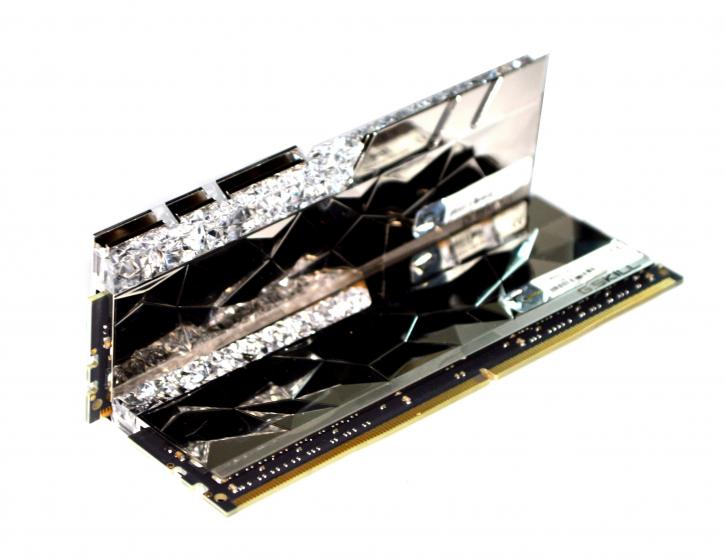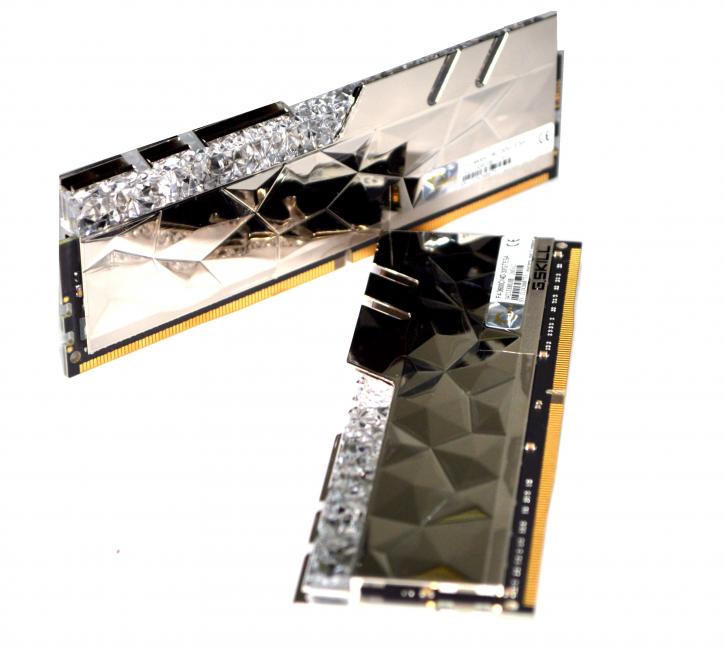Introduction
G.Skill TridentZ Royal Elite DDR4 3600 MHz CL14 32 GB (2x 16 GB)
The absolute Elite of a Royal kind?
Today, we are checking the G.Skill TridentZ Royal Elite 3600 MHz CL14. This is another addition to the TridentZ family. Previously (at the end of 2018), we’ve reviewed the Royal 3200 MHz 2 x 8 GB edition, then after almost two years -> Royal 4000 CL17 4 x 8 GB version. The Royal Elite has been introduced in mid-April this year, and the CL14 variants at the beginning of June. What’s the change between the Royal and Royal Elite? Mainly the range of speeds available – Elite starts from a higher frequency and ends on a higher one and the looks of the heat spreader. G.Skill’s TridentZ Royal Elite Series is offered at speeds ranging from 3600 MHz up to 5333 MHz, with XMP 2.0 support. You have to keep in mind that you’d need a suitable CPU and motherboard to take advantage of the 4000+ MHz variant. In the case of the Intel platform, for AMD Ryzen, it’s rather the Infinity Fabric divider that should be preferably set to 1:1 that is “holding the horses”), as it’s not possible to achieve that frequency “automatically” with just any system. The 32 GB kit we got consists of two 16 GB modules. That’s definitely the higher-end of the RAM that you can see on the market.
What’s so special about it? Capacity is not the main factor (as there are kits with even more capacity available). So what is? The combo of the frequency and the timings. The frequency is not very impressive (3600 MHz), but the timings are. The CL14 is not a standard type of RAM. This is achieved with a quite low voltage (yes, it’s safe) of 1.45 V. Also, it’s not something like 14-18-18-38, but a straight 14’s, meaning 14-14-14-34. That’s top of the top and leaves nothing to be desired. It looks like a perfect match, mainly for the Ryzen systems and the 11th gen of Intel, with Gear 1 mode enabled. We suppose it’s based on the Samsung B-Die chips; after some tweaking, it should be possible to achieve greater frequency than 3600 MHz, especially that we’ll use the 10th gen Intel system. As for the other things – the already mentioned looks, this features a full-length crystalline light bar upon a polished heat spreader in gold or silver color with an awesome 8-zone RGB lighting. You can use Asus Aura Sync, Gigabyte RGB Fusion, MSI Mystic Light, or ASRock Polychrome Sync The G.Skill TridentZ Royal Elite is relatively low-profile (44 mm of height), so it shouldn’t cause problems with most CPU coolers.
3600 MHz is not the highest frequency available from TridentZ Royal Elite; it’s the lowest frequency available (but the CL14 variant is a high-end one). There is even a 5333 MHz (CL22-32-32-52 @1.6V). That’s a kit aimed at the extreme overclockers because it would be total overkill for almost all typical users. To even run this kind of kit, you’d need a top-tier motherboard and a golden sample CPU. But getting back to the reviewed kit (two 16 GB 3600 CL14 modules), we’ll check it on two platforms (so no change here). The AMD X470 is the same as in the previous reviews (except the Galax RAM review, which already had a new setup applicable), but now, instead of the Z390 Asus motherboard paired with Intel Core i9 9900K – we’re going to use the Z590 and Intel Core i9 10850K. We are traditionally still going to try and squeeze something more out of it, so the standard 3600 MHz is not the last word here (or at least we might manage to fine-tune the latencies for the AMD platform). If you prefer, you can always stay on the safe side and stick to the advertised frequency and latencies using XMP. The memory chips used here are the Samsung B-Die’s and G.Skill states that the kits are compatible with the Intel XMP 2.0 (Extreme Memory Profile). The parameters are excellent, so are the looks – we need to check the performance then. A limited lifetime warranty backs the TridentZ Royal Elite series. The price is ~450 USD/400 EUR. Ok, next page, please.



